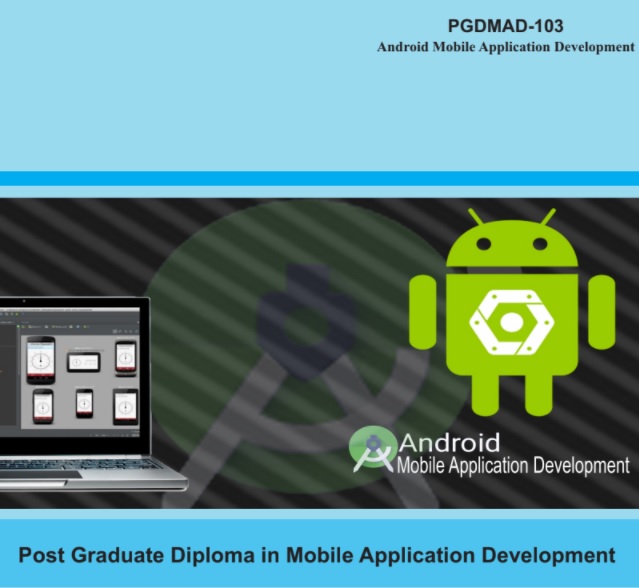Course: Android Mobile Application Development
Learning Objectives:
To be able to understand the process of developing software for the mobile
To be able to create mobile applications for android device.
To be able to create mobile applications involving data storage in SQLite database.
·To be able to create rich and powerful mobile applications that includes features such as search, location, multimedia, sensor, speech and accessibility etc.
·To be able to imagine, design, create and deploy your own apps onto the Google Play Store
Learning Outcome: After completion of this subject, the learner will be able to:
Use the development tools in the Android development environment
Use the major components of Android API set to develop their own apps
Describe the life cycles of Activities, Applications and Fragments
Use the Java programming language to build Android apps
Make UI-rich apps using all the major UI components
Store and manipulate data using Content Providers, Shared Preferences and Notifications
Do background processing with Services and AsyncTasks
Utilize Sensors to add orientation and location to their apps
Send and receive SMS messages programmatically
Package and prepare their apps for distribution on the Google Play Store
Java or object-oriented programming experience.
1. Unit-1: The Android Platform
2. INTRODUCTION TO ANDROID
3. ANDROID STUDIO INTERFACE
4. ANDROID PROJECT
5. USER INTERFACE ELEMENTS AND LAYOUTS
6. ANDROID STUDIO
1. Unit-2: Installing Android Studio
2. INPUT CONTROLS
3. INPUT CONTROLS PRACTICAL DEMO
4. INPUT CONTROLS PRACTICAL DEMO
5. INPUT CONTROLS PRACTICAL DEMO
6. Installing Android Studio
1. Unit-3: Android Studio for Android Software Development
2. SPINNER CONTROL AND RESOURCE FOLDER
3. LIST ACTIVITY AND LISTVIEW
4. PICKER CONTROL AND DIALOG
1. Unit-1: Building a sample Android application using Android Studio
2. MENU
3. GALLERY VIEW
4. HORIZONTAL SCROLL VIEW
1. Unit-2: Android Project Structure and Basics
2. DRAWING
3. ANIMATION THROUGH XML
4. AUDIO VIDEO PLAYBACK AND RECORDING
5. 3D GRAPHICS
1. Unit-3: Android Manifest File and its common settings
2. SQLite DATABASE
3. SHARED PREFERENCE
4. BUILT IN CONTENT PROVIDERS
1. Unit-1: Activities
2. ANDROID NETWORKING APIS
3. MESSSAGING
4. LOCATION BASED SERVICES
5. LOCATION BASED SERVICES PART 2
1. Unit-2: Services
2. SERVICES
3. NOTIFICATION
1. Unit-3: Intents
1. Unit-4: Permissions
1. Unit-5: Application resources
1. Unit-1: Basic User Interface Screen elements
1. Unit-2: Designing User Interfaces with Layouts
1. Unit-3: Drawing and Working with Animation










